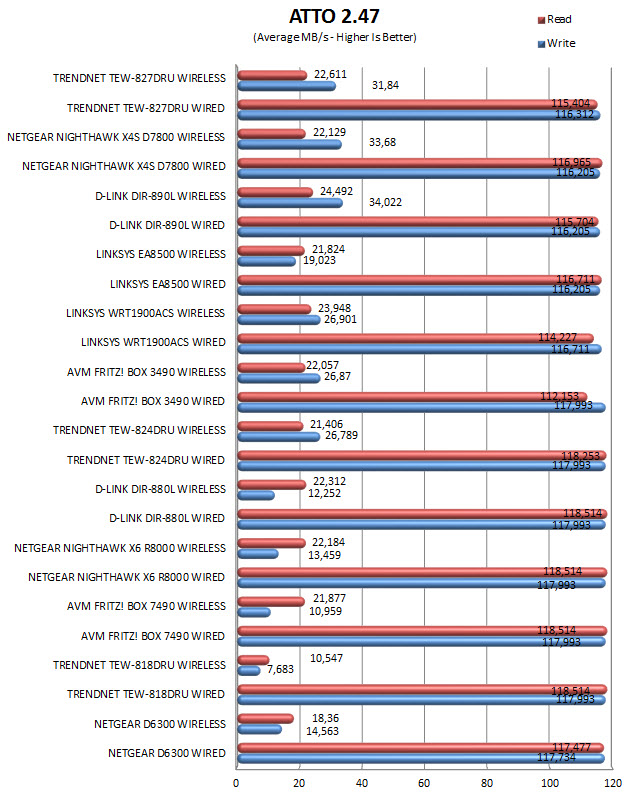TESTING METHODOLOGY
Since standalone routers can't directly connect to the internet (unless you have a cable connection which we don't) and thus the modem is responsible for internet speeds the only thing that's left is to test and see how much bandwidth they can offer by directly linking two devices with them. So once again we will be using the networking benchmark by Passmark (v.8), the QCheck by Ixia and ATTO 2.47 (since April 2015) to test such devices the same exact way we test Powerline adapters and Modem/Routers. Since we need to test new features and specifications all routers are benchmarked with their highest available wireless standard/band (5GHz in this case). Our systems are outfitted with Kingston HyperX Predator 480GB PCIe SSDs, AC1200 USB 3.0 adapters (we expect new AC1900 ones soon) and CAT7 cables and are placed 15m away from the router with 3 concrete walls between them while each test is repeated a total of 6 times after which the average scores are recorded into our charts. Both systems have Windows 7 Ultimate SP1 installed with all the updates until the 15th of March 2017.
We’ve received several requests by some of you to also measure power consumption when testing modem/routers and although differences are not that great between similar models we decided to do so (average power consumption during tests is placed in our charts). Also again after many requests from April 2017 we will also do our best to measure USB performance of any modem/router or standalone router that gets to our lab with the help of a Samsung T1 250GB Portable SSD.
TEST RESULTS





 O-Sense
O-Sense







.png)

